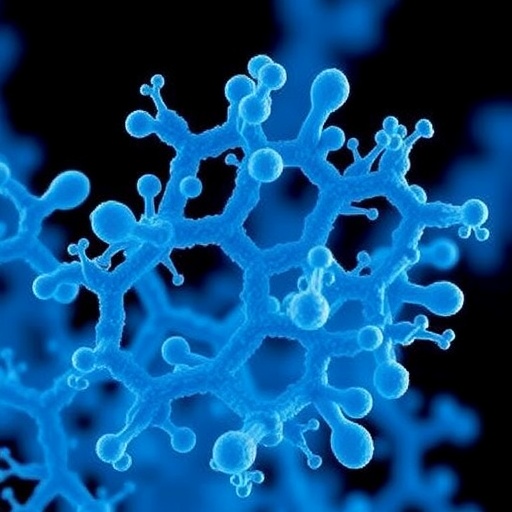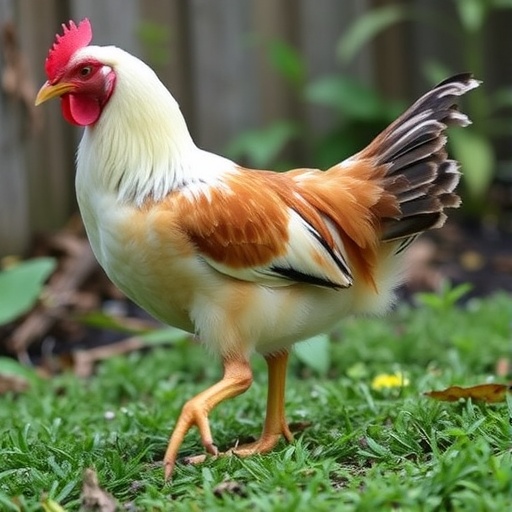A novel acyloin, termed Litchficin, has recently been identified and isolated from a halophilic Gram-positive bacterium belonging to the genus Litchfieldia. This discovery adds a new dimension to the understanding of biocompounds derived from marine microorganisms, particularly those residing in extreme habitats. The bacterium, designated as Litchfieldia sp. TUR-22, was sourced from coral, indicating a potentially rich array of biologically active compounds in coral-associated microbes. The implications of this research extend far beyond mere taxonomy, revealing pathways toward biotechnological applications and ecological insights.
Litchficin, the newly identified compound, represents an exciting frontier in the study of natural product chemistry. Acyloins, as a class of organic compounds, have garnered significant attention for their diverse biological activities. The structural characteristics of Litchficin hint at potential pharmacological properties that warrant further investigation, particularly in the context of plant growth regulation. The compound, along with three previously known metabolites—N-succinylanthranilic acid, kurasoin A, and soraphinol B—was subjected to systematic isolation and characterization procedures, showcasing the intricate processes involved in unlocking the potential of these natural substances.
The research team employed a variety of methods to elucidate the structure of Litchficin. Techniques such as nuclear magnetic resonance (NMR) spectroscopy, mass spectrometry, and various chromatographic methods were essential in revealing the chemical identity of this acyloin. The use of state-of-the-art analytical techniques not only confirmed the presence of Litchficin but also provided insights into its chemical behavior and potential interactions with biological systems. This meticulous approach underscores the importance of interdisciplinary methods when exploring the complex chemistry of natural products.
In their experiments, the researchers assessed the bioactivity of the isolated compounds, including Litchficin, by examining their effects on seed germination. The results were striking, with Litchficin and the other compounds tested at a concentration of 10 µg/ml significantly suppressing radicle elongation in lettuce seeds. Specifically, the elongation was reduced to 38–56% compared to untreated controls. This finding not only provides a measure of the disruptive effects these compounds can have on plant growth but also opens discussions about their potential application in agriculture, particularly in managing unwanted vegetation or controlling the growth of specific plant species.
Ecologically speaking, the relationship between marine organisms and their microbial associates is increasingly recognized as a critical factor in marine biodiversity and ecosystem dynamics. The isolation of Litchficin from a marine bacterium highlights the untapped potential that marine environments hold for discovering new bioactive compounds. As researchers probe deeper into these ecosystems, the prospects for finding more novel compounds will likely increase, leading to new breakthroughs not just in biochemistry, but also in agricultural science and pharmaceuticals.
Moreover, the isolation of these metabolites juxtaposes the medicinal potential they may harbor against the backdrop of ongoing global challenges such as food security and sustainable agriculture. As populations grow and threaten global food systems, the discovery of natural herbicides or growth regulators from microorganisms like Litchfieldia could provide innovative solutions to enhance crop productivity and resilience. The versatility of these compounds in modulating plant growth and potentially addressing agricultural pests or diseases could revolutionize current practices in farming.
The move towards a bio-based economy, leveraging natural products for agricultural and pharmaceutical applications, speaks volumes about the importance of such discoveries. By exploring the intricacies of how compounds like Litchficin interact with plant systems, researchers can gradually piece together a larger narrative about the ecological roles these natural products may play, both in nature and in agroecosystems. Understanding these interactions in depth not only fuels fundamental scientific inquiry but also champions the cause of environmental stewardship in the face of climate change.
The discussion also inherently invites interest in the conservation of coral reefs and the broader implications of coral-associated bioresources. As these ecosystems face unprecedented threats from climate change, pollution, and overexploitation, the need to protect microorganisms like Litchfieldia becomes paramount. Their role in biocompound production not only supports biodiversity but also contributes to the development of novel solutions aimed at mitigating human impacts on the planet. The importance of marine conservation for sustaining these invaluable chemical reservoirs cannot be overstated.
In summary, the identification of Litchficin from the halophilic Gram-positive bacterium Litchfieldia sp. TUR-22 is an exciting advancement in natural product discovery. The reported effects of this acyloin on plant growth suppression open many avenues for further exploration, both in scientific research and potential agricultural applications. These findings exemplify the power of marine microbes as a source of innovative and environmentally friendly solutions to contemporary problems facing society. As research continues, it is clear that these microbial treasures may hold the key to unlocking sustainable practices that align with the urgent calls for environmental responsibility and protection.
Subject of Research: Isolation and characterization of Litchficin, an acyloin from a coral-derived bacterium, and its effects on plant germination.
Article Title: Litchficin, a germination inhibitory acyloin from a halophilic Gram-positive bacterium of the genus Litchfieldia.
Article References:
Raji, M.M.A., Oku, N., Trianto, A. et al. Litchficin, a germination inhibitory acyloin from a halophilic Gram-positive bacterium of the genus Litchfieldia.
J Antibiot (2025). https://doi.org/10.1038/s41429-025-00873-0
Image Credits: AI Generated
DOI: https://doi.org/10.1038/s41429-025-00873-0
Keywords: Marine microbiology, natural products, Litchfieldia, Litchficin, plant growth regulation, biocompounds, ecological conservation, sustainable agriculture.
Tags: biocompounds from marine microorganismsbiotechnological applications of marine compoundscoral-associated microbial metabolitesecological insights from extreme habitatshalophilic bacteria discoveriesLitchfieldia sp. TUR-22natural product chemistry advancementsnovel acyloin compound Litchficinpharmacological properties of acyloinsplant growth regulation potentialsstructural characterization techniques in microbiologysystematic isolation of natural substances





